22 Incredible Facts That Make Montana Like No Other Place in the World
As a big, remote state located on the northern border of the United States, Montana is home to some of the most stunning natural beauty in the country. Montana does not have any major airports or destination cities. However, it does have some of the most incredible opportunities for outdoor exploration. This article covers some of the most unique and interesting facts about Montana. We will cover the biggest and smallest cities, learn about National Parks in Montana, discover some bits of the state’s history, and more. Perhaps after reading these fun facts, you might even decide that this western state is worth visiting on your next road trip! Let’s jump in and learn facts about Montana together now.
About Montana
Before we explore a list of fun facts about the state of Montana, let’s first cover the basics that you need to know. Montana is a state in the Rocky Mountain region in the U.S., in the northwestern part of the country. This western state has incredible, dramatic terrain. From the Rocky Mountain range to cold lakes, alpine forests, and vast swaths of wilderness, Montana is a state of diverse terrain and unique culture. Home to just over 1.1 million residents (in 2021), Montana is bordered by Idaho to the west, North Dakota and South Dakota to the east, and Wyoming to the south. North of Montana is Canada, and the state borders Canada’s provinces of Alberta, British Columbia, and Saskatchewan.
The capital of Helena is not the most populous city in the state – in fact, it doesn’t even make the list of top 5 most populous cities! In fact, the capital city is only the sixth-most populous city in the state. We will learn more about the biggest cities in Montana later and discover the largest city in the state later in this article.
Now, with these basics covered, let’s jump in to discovering other facts about the state of Montana!
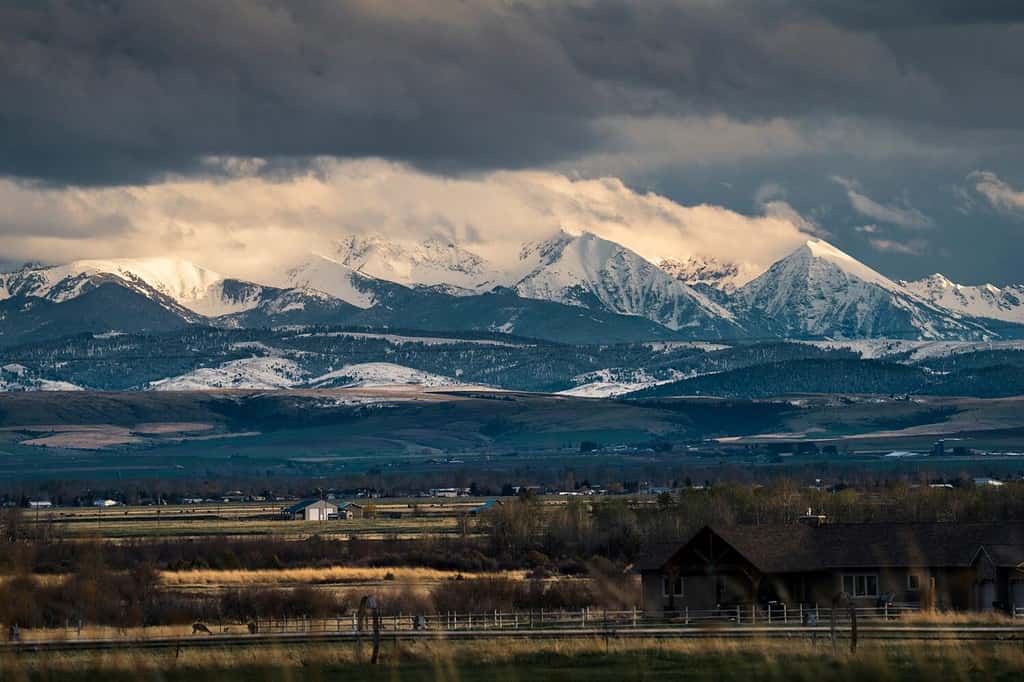
©Cavan-Images/Shutterstock.com
1. Montana was the 41st State to Join the U.S. Union
Montana joined the Union on November 8, 1889. This makes it the 41st state to join the Union, after its neighbors North Dakota and South Dakota (39th and 40th, respectively). Montana was a U.S. territory for 25 years. It only became a part of the Union after the U.S. government passed the Enabling Act of 1889. Montana Territory voters ratified a new state constitution, and then-President Benjamin Harrison officially brought Montana into the Union.
2. Montana is the 4th Largest State by Size
With 147,040 square miles, Montana is the fourth-largest state in the country. The only states bigger are Alaska, Texas, and California! Not only that, but Montana is the largest landlocked state – since all of the others have significant coastlines! Montana is roughly equivalent to the size of Japan.
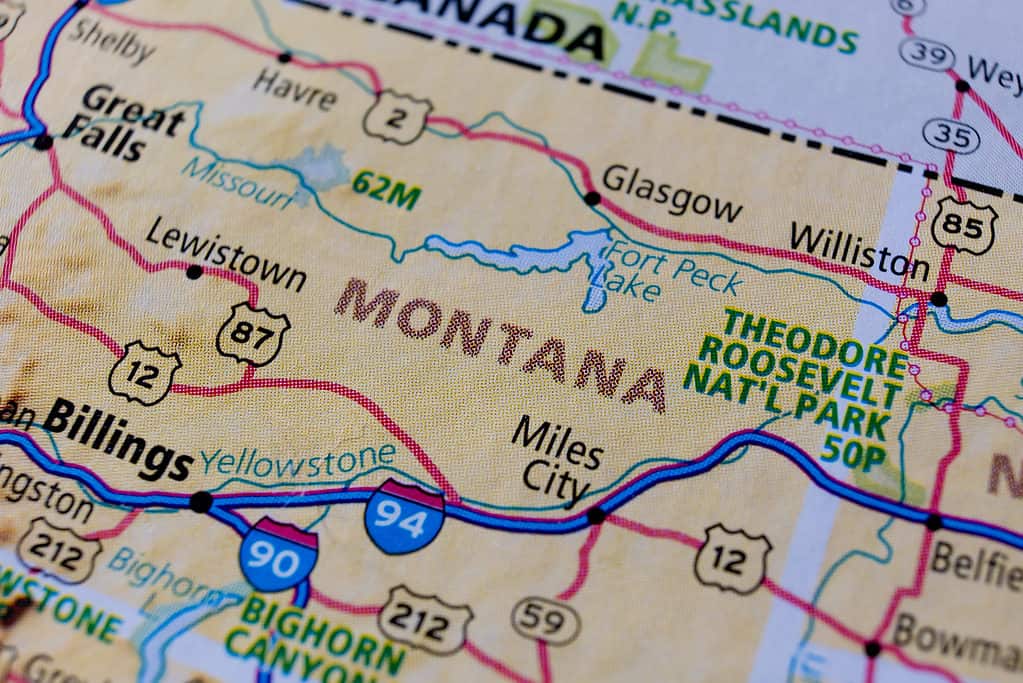
©Leo_nik/Shutterstock.com
3. Montana is the 8th Least Populous State
With a population estimated at only 1.1 million in 2022, Montana is among the least-populated states in the U.S.! In fact, it is the 8th least populous, putting it ahead only of remote states like Alaska, Vermont, and nearby Wyoming. Montana is just ahead of the 9th least populated state, Maine.
4. The Highest Point in Montana is Granite Peak
The highest point in Montana is at Granite Peak. Granite Peak is a mountain in the Beartooth Mountain and Rocky Mountain ranges. At an elevation of 12,807 feet, Granite Peak is the highest point in the Beartooth Mountains, the highest point in Montana, and the tenth-highest point in the United States. Located in the south-central part of the state, Granite Peak is north of Yellowstone National Park, with Bozeman and Billings being the closest cities. Only the most experienced mountain climbers who have the right gear and technical climbing expertise should attempt to summit this massive, challenging peak.
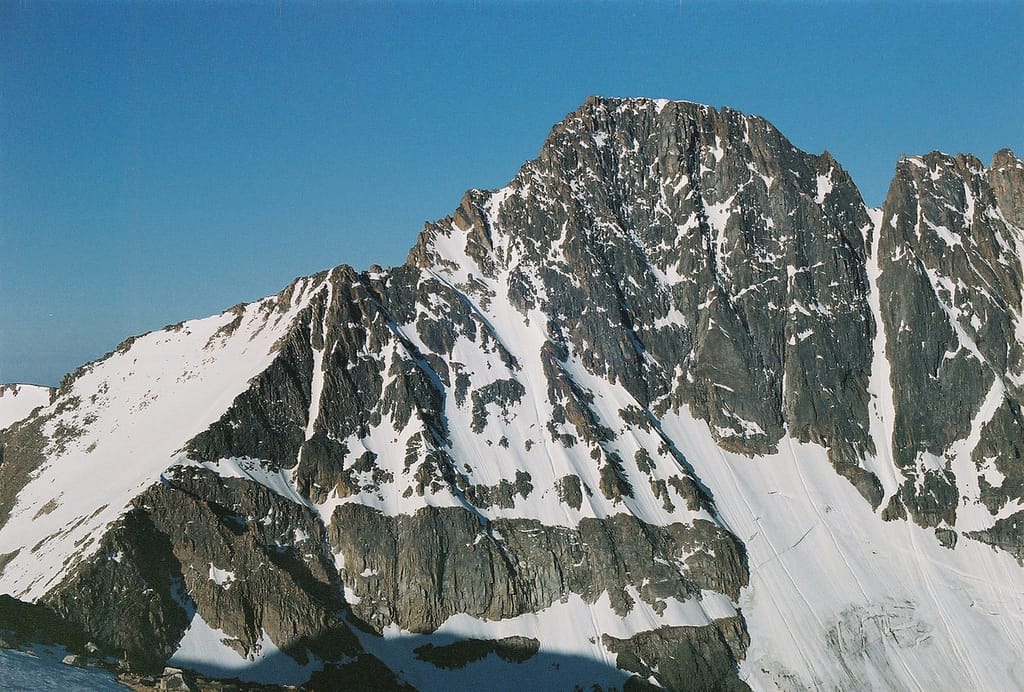
©jfisher2167 / CC BY 2.0 – License
5. The Lowest Point in Montana is the Town of Troy
The lowest point in Montana has an elevation of 1,820. This lowest point is in the small town of Troy, a community in the valleys of northwestern Montana’s mountains. Troy is home to only about 925 residents. The lowest point is in a location where the Kootenai River crosses the Montana-Idaho border.
6. Billings is the Biggest City by Population
As we mentioned before, the Montana capital of Helena is not the biggest city in the state! In fact, the largest city by population is Billings (population of about 120,000). Missoula is the second-largest city, with a population of about 77,000. Billings is a town in the south-central part of Montana. It is the County Seat of Yellowstone County and has been nicknamed the “Magic City” due to its rapid, “magical” growth since it was founded as a railroad town in 1882. Billings sits beside the Yellowstone River and is famous as a “gateway” to Yellowstone National Park.
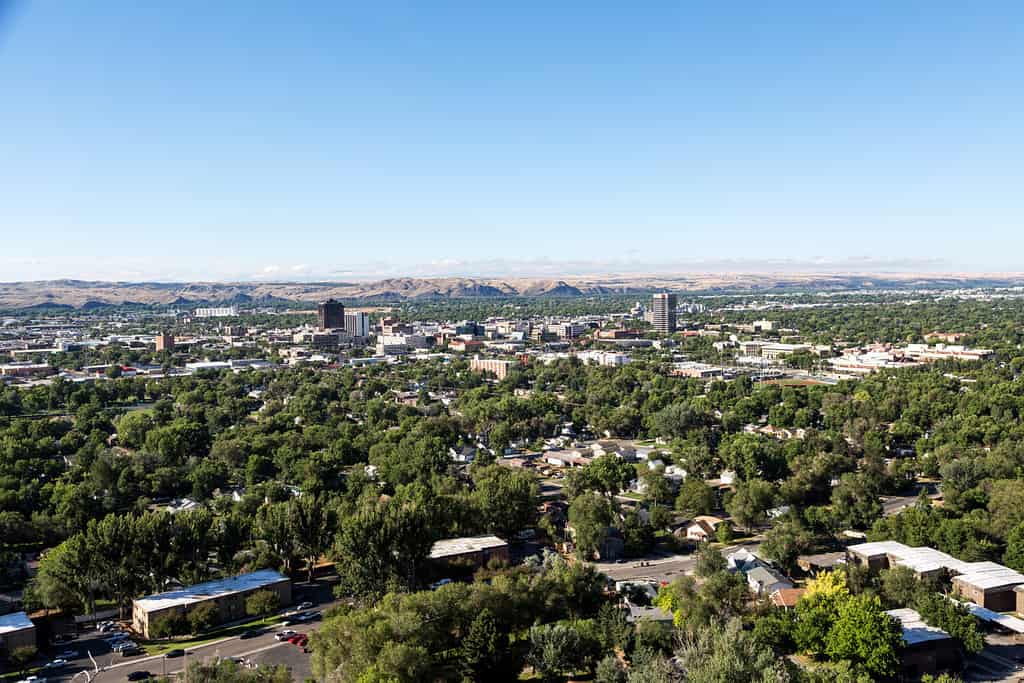
©David Harmantas/Shutterstock.com
7. Agriculture is Montana’s Leading Industry
Montana is dominated by agriculture, including crop farming and ranching. Montana leads the country in production of organic wheat, flax, lentils, and dry peas. However, many farmers also produce sweet cherries, sugar beets, hay, and more. In fact, wheat, hay, barley, and sugar beets are the state’s top crops. Like its neighbor of North Dakota, beekeeping and honey production are also important parts of North Dakota’s agricultural sector.
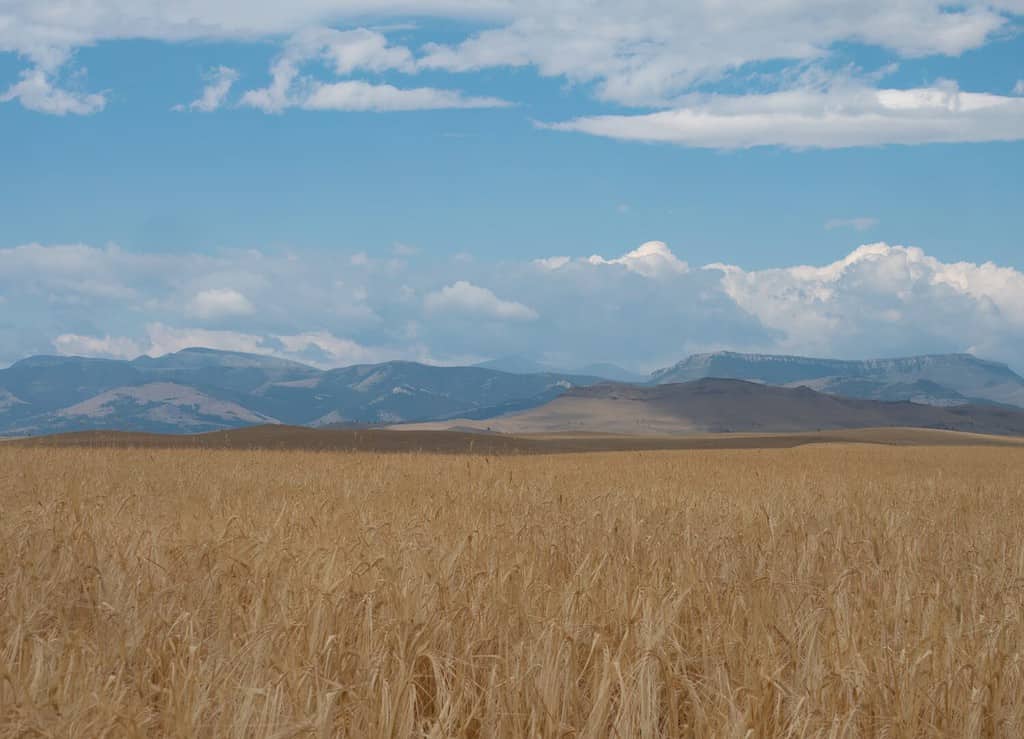
©Teresa Otto/Shutterstock.com
8. Montana’s Unofficial Nickname is the “Big Sky State”
Though Montana does not have an official nickname, many people call it by an unofficial nickname: the “big sky state.” Supposedly, this nickname dates back to an advertising campaign by the Transportation Department back in the 1930s. According to Montana Public Radio, the Transportation Department was building thousands of miles of highways. With that new infrastructure in place, the department wanted to find a way to draw visitors to Montana. In 1971, the Transportation Department made a video called “Montana, Land of the Big Sky.” It described the state’s scenery and helped the nickname of “Big Sky” become synonymous with an idyllic natural landscape and wide open spaces in the west, including in parts of Montana.
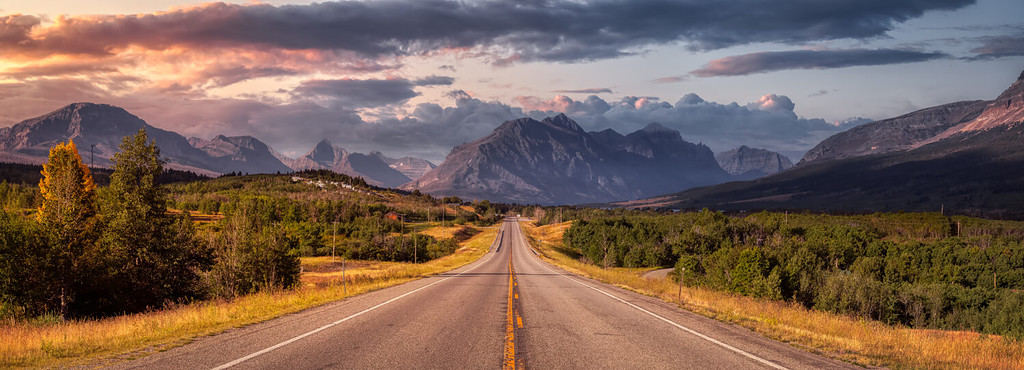
©EB Adventure Photography/Shutterstock.com
9. Montana Has Eight (8) National Parks
Did you know that there are eight (8) National Parks in Montana? Together, these parks generate of $618.9 million in tourism each year from about 3.6 million visitors. The vast majority of visitors come to the two most popular National Parks: Glacier National Park and Yellowstone National Park.

©Harry Beugelink/Shutterstock.com
10. Montana’s Glacier National Park is a Top Tourist Destination
Glacier National Park is a 1,583 square-mile wilderness area located in the Rocky Mountain region of Montana. It was established on May 11, 1910. At the time, its name was “Waterton-Glacier International Peace Park.” Within the park itself, there are a total of 762 lakes, 131 of which have names. The largest lake is Lake McDonald, which is 9.4 miles long and 1.5 miles wide. Overall, Glacier National Park covers 1,012,837 acres of land. As of 2022, Glacier National Park is home to 25 active glaciers, with gorgeous glacier-carved peaks and valleys running throughout the park. This tourist destination offers over 700 miles of hiking trails and entices visitors who enjoy backpacking, biking, camping, photography, and more.
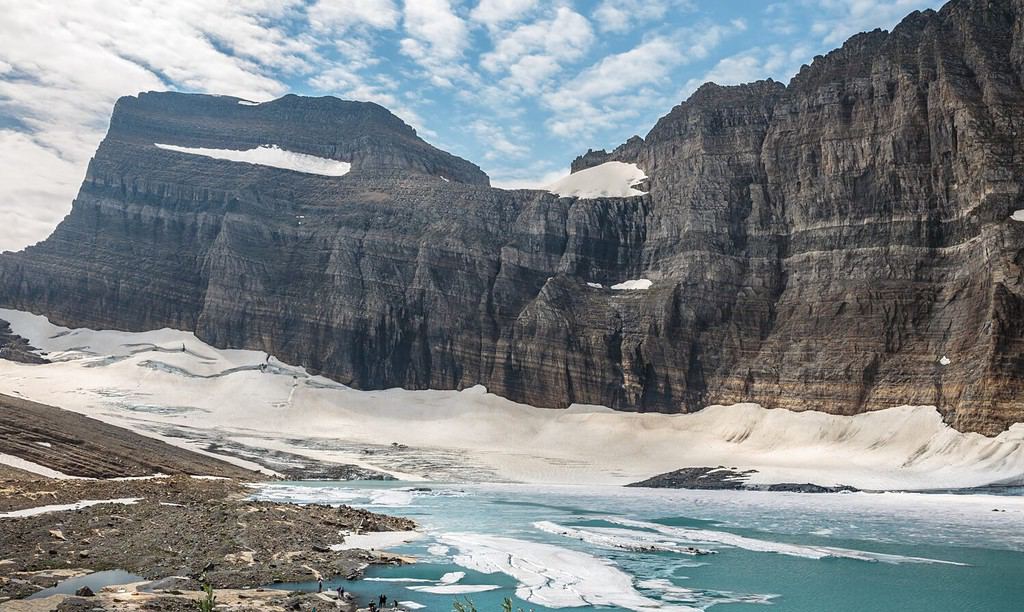
©Stephen Moehle/Shutterstock.com
11. The Official State Flower is Bitterroot (Lewisia rediviva)
Montana’s official state flower is a plant that grows from Washington and California all the way east through Montana, Colorado, and Arizona. The species Lewisia redivivia, also known as bitterroot, is a perennial plant that grows at elevations from 2,500 to 10,000 feet. These plant produce pink, rose, and even white-colored flowers, which reach about 2 inches across. Bitterroot is also culturally significant for multiple Native tribes in the western part of North America.
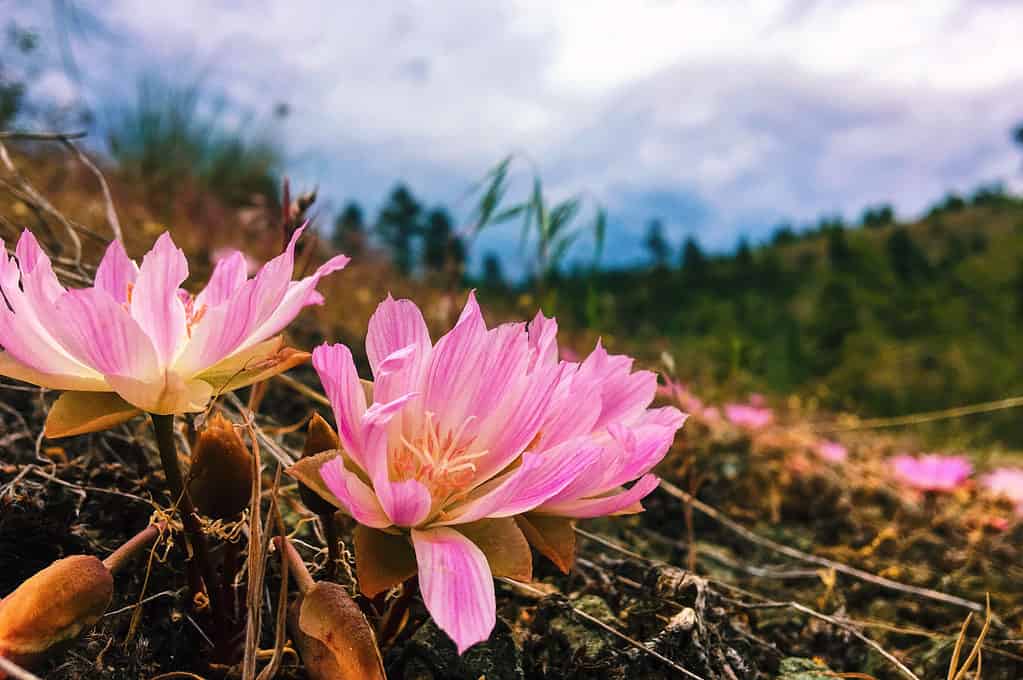
©Veronika Gaudet/Shutterstock.com
12. The Rocky Mountain Region Covers ⅖ of Montana
In Montana, two-fifths of the state is in the Rocky Mountain region. The Rocky Mountains, also known as the “Rockies,” define a large amount of the western U.S. In fact, this range is the largest mountain system in North America. The Rocky Mountains cover states including Colorado, Idaho, Nevada, Utah, Wyoming, and Montana.
13. The Official State Tree is the Ponderosa Pine (Pinus ponderosa)
Montana’s state tree is the Ponderosa pine (Pinus ponderosa). The Ponderosa pine can live for hundreds of years, growing tall into the sky as large and beautiful evergreen trees. This tree has had an important role in the development of communities in the western United States. From forming railroad ties and telegraph poles to building homes and bracing mines, this tree has long played a role in building and industry in Montana and other nearby states.
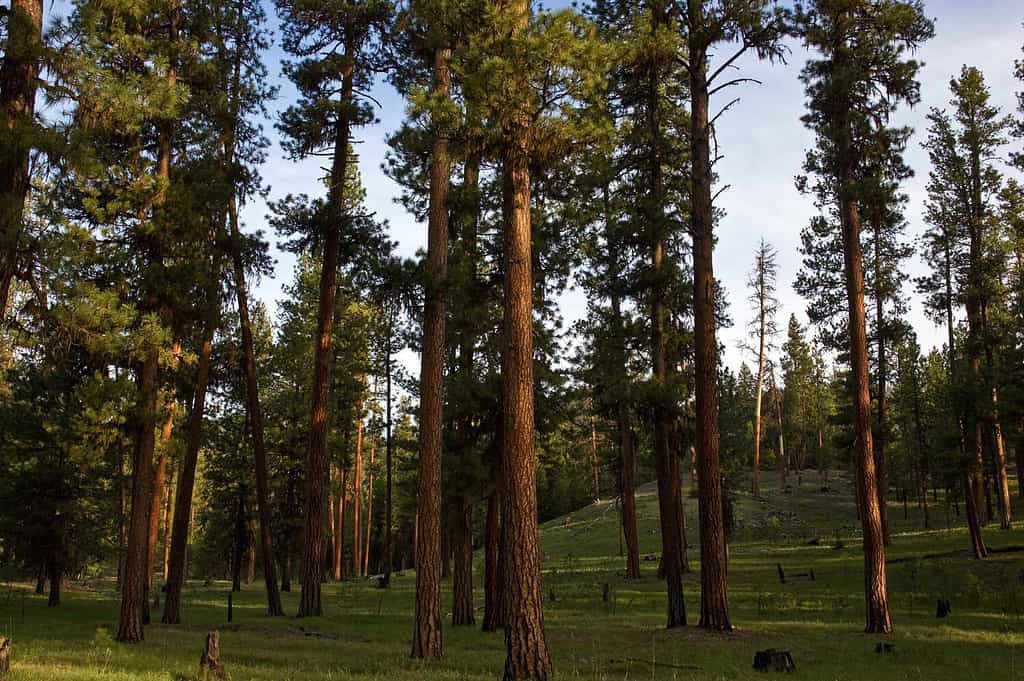
©photogal/Shutterstock.com
14. Montana is Home to the World’s Shortest River
Next on our list of Montana facts is a Guinness Book of World Records trivia question! What is the world’s shortest river and where is it located? In fact, the Roe River in Great Falls, Montana has the notable distinction of being the world’s shortest river. This super-short river flows only 200 feet, reaching between Giant Springs and the Missouri River. The source of the Roe River is Giant Springs – which itself has the distinction of being the largest freshwater spring in the U.S.
15. Montana’s Signature Drink is a Whiskey Ditch
Have you heard of the drink called the “whiskey ditch”? A drink name ending in the word “ditch” signals to a bartender that you want your drink “with water.” Therefore, the recipe for Montana’s signature beverage is pretty straightforward: it’s whiskey with water. While it’s not the official “state beverage,” many consider the whiskey ditch to uniquely represent the culture and people of Montana.
16. Montana Has Two State Gemstones
Montana’s two state gemstones are agate and sapphire. Since 1969, these two gemstones have shared the unique recognition of being the official state gemstones. Gemstone mining in Montana has long had an important place in the state’s economy. In fact, Montana is the only source of sapphires in the United States! Additionally, while some type of agate appears in almost every state in the U.S., Montana agate is known for being particularly beautiful.
17. The Smallest City in Montana is Ismay
With a population of only about 17 people, the smallest municipality in Montana (according to population) is the town of Ismay. Located in Custer County, Ismay is one of multiple tiny towns dotting across Montana.
18. Montana Has More Elk, Deer, and Antelope than People
In Montana, the wildlife is plentiful. So plentiful, in fact, that the populations of elk, deer, and antelope each outnumber the number of people in the state! Montana is home to many large mammals – including the gigantic moose, which can weigh 1,500 pounds! Montana also has many other wild animals, including brown bears, black bears, bighorn sheep, and many other large mammal species.
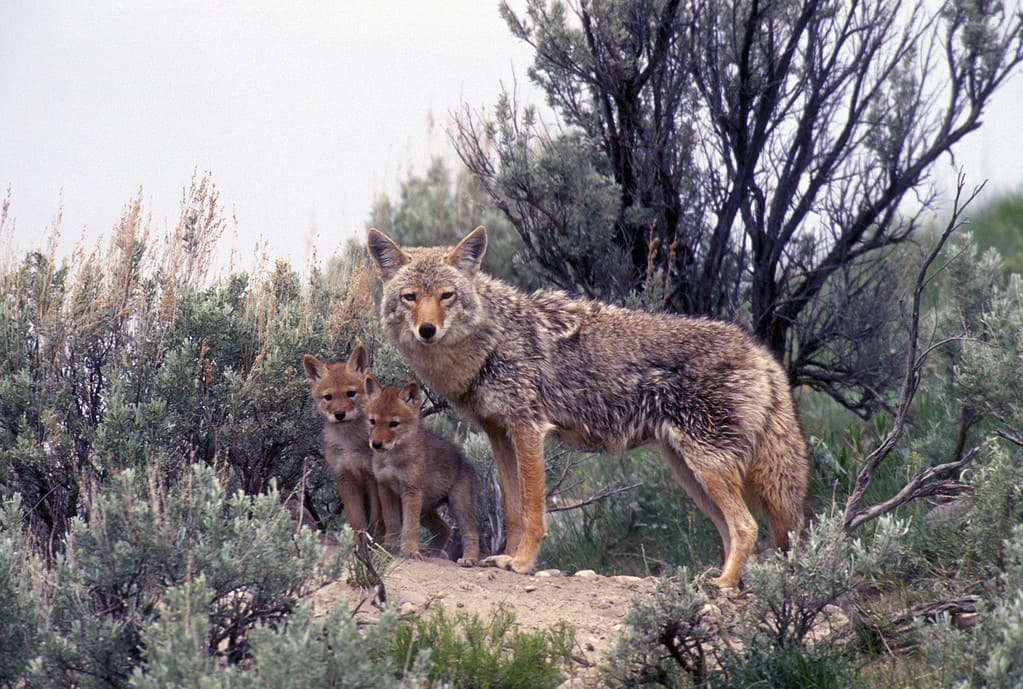
©KenRinger/iStock via Getty Images
19. Montana’s Name Comes from a Spanish Word Meaning “Mountainous”
The name “Montana” comes from a Spanish word. The Spanish “montaña,” roughly translates to “mountainous.” This name reflects the over 300 mountain peaks covering the state.
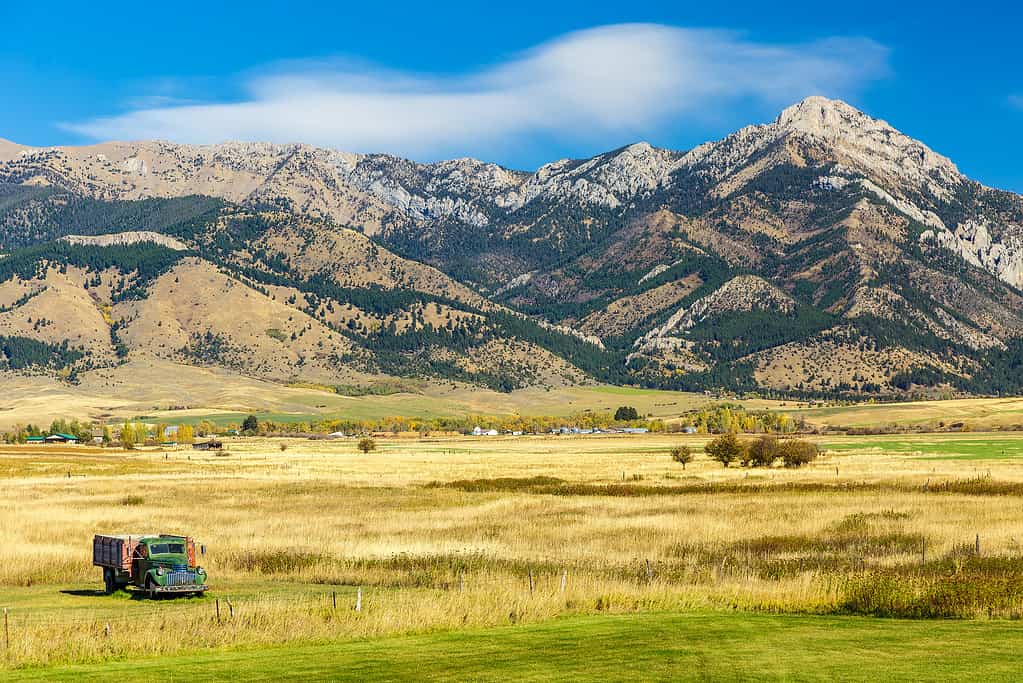
©IslandLeigh/iStock via Getty Images
20. Montana is Also Called the “Treasure State”
The plentiful mining opportunities in Montana helped this state gain its other nickname: the “Treasure State.” In fact, for more than 100 years, Montana has been known for its mining and abundant natural and mineral resources. Some of the most important resources in Montana are coal, copper, gold, manganese, sapphire, silver, lead, oil, and zinc.

©iStock.com/suesmith2
21. Montana’s State Motto is “Oro y Plata”
Following the theme of Montana’s abundant natural resources, the state motto of Montana is “oro y plata.” This motto is Spanish and means “gold and silver.” It once again refers to the state’s history of mining, the importance of its natural resources, and the long importance that these resources have had in building the state’s culture and economy.
22. Montana is Full of Frontier Counties
Of 56 counties in the state, 46 of Montana’s counties are called “frontier counties.” This means that people living in these states are living rural, remote lifestyles on the “frontier.” By definition, these counties have, on average, only 6 people per square mile or even fewer!
What Are Your Favorite Facts About Montana?
There you go! 22 fun and interesting Montana facts. Did you learn anything new or discover something you would like to learn more about? Which fun fact is your favorite? This is a beautiful and unique state that is well worth learning more about or even visiting!
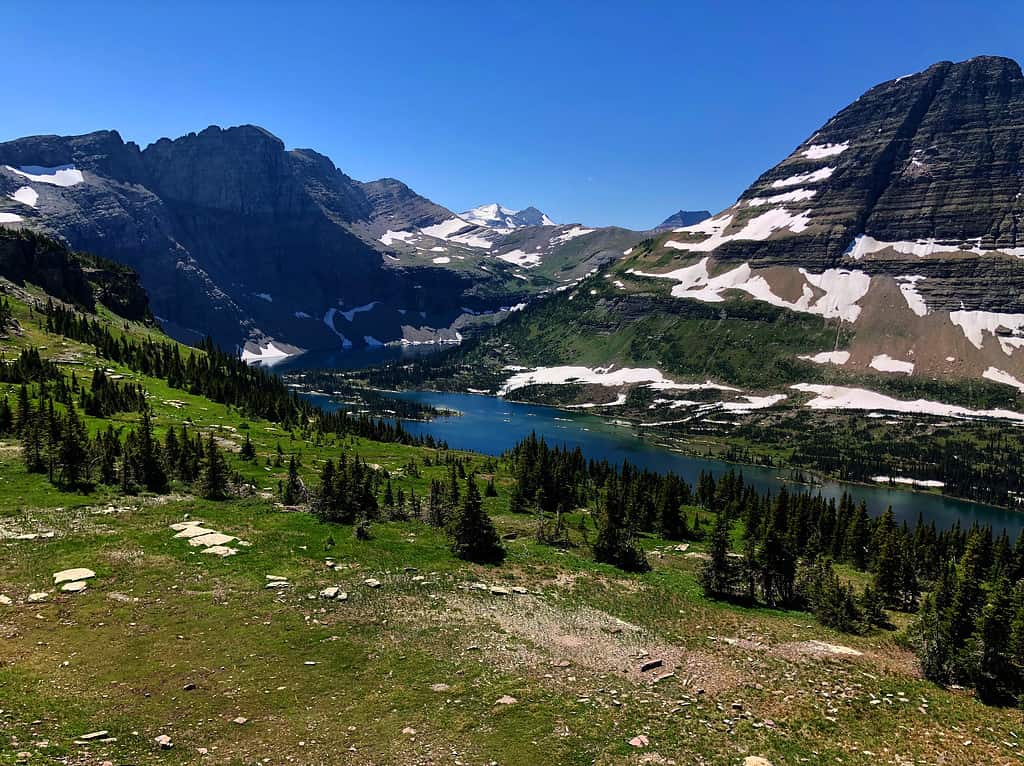
©Mark Ingalls/iStock via Getty Images









